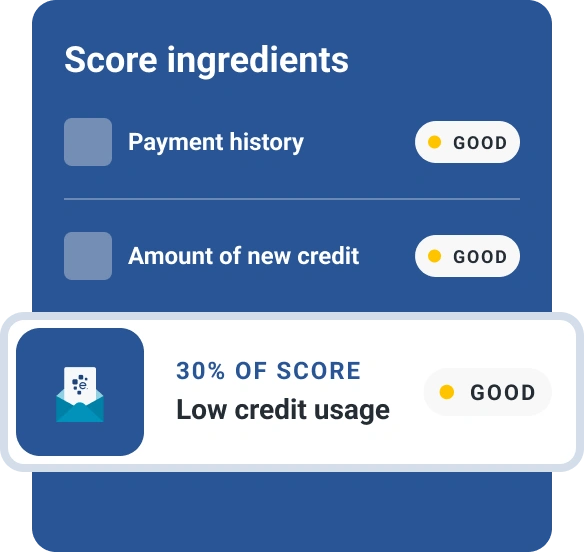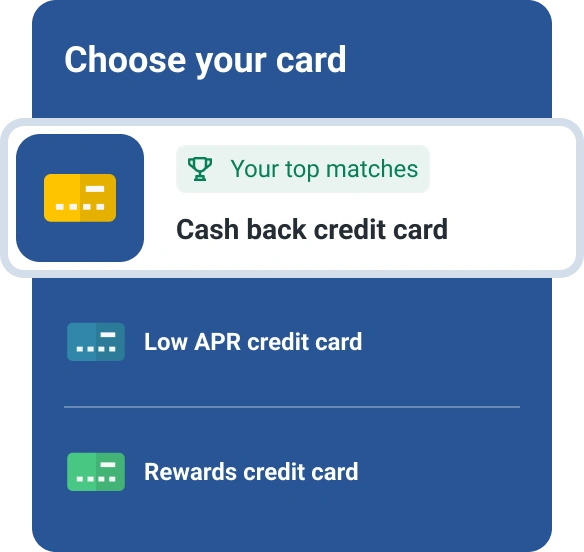Current Credit Card Interest Rates
The average credit card interest rate is 21.98% as of October 2025, according to Curinos data, but it can range from 14.34% to 24.69% across different types of credit cards and card issuers.
Understanding how your card's rate compares and what alternatives might offer lower costs can help you make smarter decisions about managing debt. Here's what you need to know.
Current Credit Card Interest Rates
The average credit card interest rate is 21.98%, and that's stayed roughly the same throughout the year. However, recent Federal Reserve rate cuts will likely lead to that average decreasing in the coming months.
Remember that rates vary widely depending on the card type, issuer and whether the card offers rewards. Here's a look at how average rates can vary across categories.
Consumer Credit Cards
Credit union cards and student credit cards usually have lower interest rates than traditional bank-issued consumer cards. Credit unions are not-for-profit institutions, so they often pass savings on to members through reduced lending rates and lower fees.
| Personal Credit Card | Student Credit Card | |
|---|---|---|
| Bank | 24.69% | 16.69% |
| Credit union | 14.34% | 17.51% |
Source: Curinos data from October 2025
Rewards credit cards include those that provide rewards in the form of cash back or miles as a percentage of purchases made using the card.
| Personal Credit Card | Student Credit Card | |
|---|---|---|
| Bank | 21.98% | 18.75% |
| Credit union | 15.90% | 19.50% |
Source: Curinos data from October 2025
Student cards, meanwhile, are designed for borrowers with limited credit history, offering modest limits and simpler terms to help build credit responsibly. In contrast, large banks typically charge higher APRs to offset broader operating costs, marketing expenses and the risk associated with offering higher credit limits or more premium rewards programs.
Learn more: Are Credit Cards Rewards Worth It?
Business Credit Cards
Business credit card rates tend to fall between consumer and student credit card rates, reflecting their unique risk profile and usage patterns. The lower credit union rates align with their not-for-profit model and member-focused approach. At the same time, banks often charge more to offset higher administrative costs and the broader range of perks business cards typically offer.
| Reward | Non-Reward | |
|---|---|---|
| Bank | 19.55% | 17.22% |
| Credit union | 14.77% | 14.93% |
Source: Curinos data from October 2025
Transaction Types
Credit cards assign different APRs to different types of transactions because each transaction type carries a different level of risk for the lender. Cash advances typically come with the highest APRs because borrowers who take cash advances are often in more urgent financial situations, resulting in a greater risk of nonpayment.
Average Credit Card APR by Transaction Type
| Issuer | Purchase APR | Balance Transfer APR | Cash Advance APR |
|---|---|---|---|
| Bank | 21.98% | 20.94% | 30.24% |
| Credit Union | 15.90% | 15.94% | 18.39% |
| Internet Bank | 22.06% | 21.61% | 32.24% |
| Issuer | Purchase APR | Balance Transfer APR | Cash Advance APR |
|---|---|---|---|
| Bank | 18.75% | 18.75% | 29.24% |
| Credit Union | 19.50% | 19.50% | 28.40% |
| Issuer | Purchase APR | Balance Transfer APR | Cash Advance APR |
|---|---|---|---|
| Bank | 19.55% | 19.70% | 29.99% |
| Credit Union | 14.78% | 14.90% | 18.71% |
Source: Curinos
Historical Credit Card Interest Rates
Looking at the long-term trends published by the Federal Reserve, the average credit card interest rate stood at 22.83% in August 2025 (the most recent month available). Over recent years, this rate has trended significantly upward, from an average of 16.28% in 2020, primarily due to inflation and the Federal Reserve's interest rate hikes that have been issued to combat it.
Average Credit Card Interest Rates
What Determines Credit Card Interest Rates?
Credit card interest rates are influenced by a mix of market conditions and your personal credit profile:
- Federal funds rate: When the Federal Reserve raises or lowers benchmark rates, credit card APRs typically move in the same direction.
- Credit score: Good credit scores signal lower risk to lenders, helping you qualify for lower APRs.
- Debt-to-income ratio: Lenders consider how much of your income goes toward debt; higher ratios often mean higher interest rates.
- Card type: Rewards and business credit cards tend to have higher APRs to offset perks and potential risk.
- Issuer policies: Each credit card issuer sets its own rate structures, so similar applicants may see different offers depending on the lender.
What Is a Good Interest Rate on a Credit Card?
A good credit card interest rate is one that's below the national average, which currently hovers at 21.98%. Consumers with excellent credit may qualify for rates in the mid-teens or lower, while those with fair or poor credit often see rates in the 20% to 30% range.
And remember that credit cards typically feature different types of interest rates, including:
- Purchase APR: The rate charged on regular purchases if you carry a balance.
- Balance transfer APR: The rate for balance transfers moved from another card, often lower for a promotional period.
- Introductory APR: A temporary low or 0% intro rate for new cardholders, typically lasting six to 24 months.
- Cash advance APR: A higher rate for withdrawing cash from your credit card using a cash advance.
- Penalty APR: A steep rate applied after 60 days of missed payments.
Learn more: How Does Credit Card Interest Work?
How to Lower Your Credit Card Interest Rate
Credit card interest rates aren't set in stone, and you may be able to bring yours down with the right approach. Here are some tips to help:
- Improve your credit score. Pay on time, reduce balances and limit new credit applications to boost your credit profile and qualify for better terms.
- Compare multiple offers. Different issuers set their own APRs, so shopping around can help you find the most competitive rate.
- Ask for a rate reduction. If you've built a solid payment history, call your issuer and request a lower rate. They may agree to keep your business.
- Transfer your balance. Consider a 0% intro APR balance transfer card to pay off existing debt interest-free during the promotional period.
- Pay down existing debt. A lower credit utilization rate can improve your score and signal to lenders that you're a lower-risk borrower.
How to Avoid Paying Interest on Credit Cards
Even if you can't lower your APR, there are ways to sidestep interest entirely. Here are some steps you can take to enjoy your credit card's benefits while minimizing your costs:
- Pay your balance in full each month. Avoid carrying a balance past the due date to take advantage of your card's grace period and pay no interest.
- Know your billing cycle. Understanding when interest starts accruing helps you plan payments strategically.
- Avoid cash advances. Interest on cash withdrawals starts accruing immediately—there's no grace period.
- Use 0% intro APR offers wisely. Take advantage of promotional periods to pay off balances before the regular rate applies.
- Set up automatic payments. Ensuring your bill is paid in full and on time each month helps you completely sidestep interest charges.
The Bottom Line
Credit card interest rates have climbed in recent years, making it more important than ever to understand how your APR works and how to manage it. Knowing what affects your rate, how to compare offers and how to pay strategically can help you save significantly over time.
If you're carrying a balance, explore ways to lower your interest rate or transfer it to a 0% intro APR card to cut costs while you pay down debt. And before you apply for a new card, check your Experian credit report and FICO® ScoreΘ to see where you stand. A strong credit profile can unlock lower rates, better terms and bigger savings.
Methodology: The analysis results provided are based on an Experian-created statistically relevant aggregate sampling of our consumer credit database that may include use of the FICO® Score 8 version. Different sampling parameters may generate different findings compared with other similar analysis. Analyzed credit data did not contain personal identification information. Metro areas group counties and cities into specific geographic areas for population censuses and compilations of related statistical data.
FICO® is a registered trademark of Fair Isaac Corporation in the U.S. and other countries.
What’s on your credit report?
Stay up to date with your latest credit information—and get your FICO® Score for free.
Get your free reportNo credit card required
About the author
Ben Luthi has worked in financial planning, banking and auto finance, and writes about all aspects of money. His work has appeared in Time, Success, USA Today, Credit Karma, NerdWallet, Wirecutter and more.
Read more from Ben

